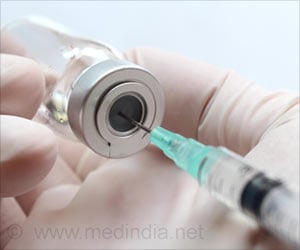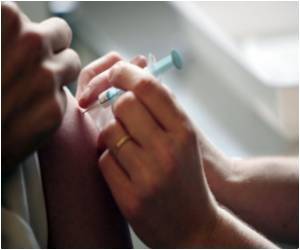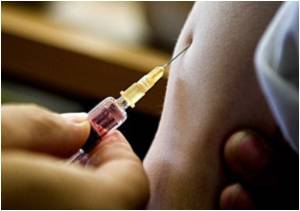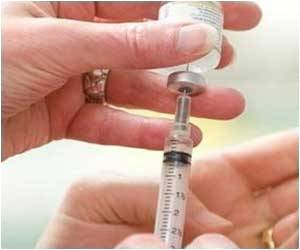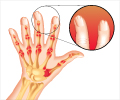The lifetime risk of shingles in the general population is one in three. The risk in patients with arthritis is twice that of the age-matched general population.

‘People with rheumatoid arthritis have about 1.5 times the risk of healthy older adults of developing shingles, a virus related to chickenpox that causes pain and a blistering rash.’





Researcher Kevin Winthrop and his colleagues conducted the research, which consisted of two studies. In one study, 112 patients with active rheumatoid arthritis were vaccinated and then randomized to receive either tofacitinib (a Janus kinase inhibitor) or placebo, initiated 2-3 weeks post-vaccination. Patients developed robust immune responses to the vaccine, and the start of tofacitinib after vaccination had no negative impact on the established immune response. In fact, patients treated with tofacitinib had similar or even higher immune responses to the vaccine compared with placebo-treated patients, perhaps because they had better control of their rheumatoid arthritis. "We showed that the vaccine was adequately immunogenic in patients whether they were starting tofacitinib or placebo in a few weeks, and the immunogenicity and the response to the vaccine were similar to what we've seen outside the rheumatoid arthritis setting in general population studies," said Winthrop. One patient experienced disseminated varicella infection after starting tofacitinib. The investigators discovered that this patient was the sole participant who did not have chicken pox in the past. The finding emphasizes the importance of only giving the vaccine to patients who have had chicken pox because shingles arises when the chicken pox virus that remains dormant in the body is reactivated. Arthritis drugs that suppress the immune system put patients at an elevated risk of disseminated varicella infection following vaccination. The second study by the group looked to see if concomitant use of what are called conventional synthetic disease-modifying antirheumatic drugs (csDMARDs, such as methotrexate and chloroquine) or corticosteroids contribute to the increased risk of shingles linked to tofacitinib. The study involved an analysis of 19 clinical trials involving a total of 6192 patients with rheumatoid arthritis.
Shingles rates were lowest for patients taking tofacitinib without csDMARDs or corticosteroids and highest for those taking tofacitinib with csDMARDs and corticosteroids. The investigators noted that similar efficacy has been observed with tofacitinib in phase III clinical studies regardless of whether it is administered as monotherapy or in combination with csDMARDs and/or corticosteroids. Therefore, the use of tofacitinib alone for the treatment of rheumatoid arthritis should be considered to help reduce the risk of shingles in vaccinated patients, provided that the patient's arthritis remains controlled on the drug. "If you want to lower shingles risk for rheumatoid arthritis patients, there are two strategies: one is vaccinating them and the other is getting them off steroids and methotrexate if you can," said Winthrop. The study appears in the Arthritis & Rheumatology journal.
Source-ANI

